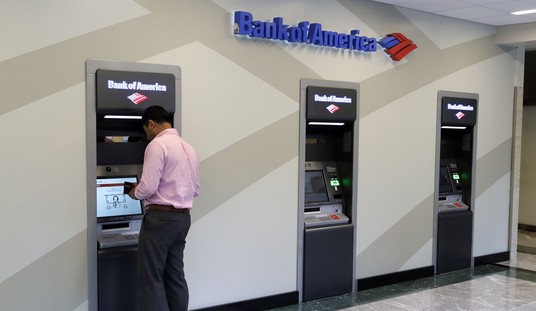Like two trains passing in opposite directions in a tunnel, the Bay Area Rapid Transit (BART) strike has created some loud and startling sound waves that echo around the contours of power in America.
Every work day, 200,000 passengers board BART, mostly for the commute from suburbia to downtown San Francisco. When the Service Workers International Union (SEIU) and the Amalgamated Transit Union (ATU) went on strike, they dumped these 200,000 passengers on one of the most overcrowded and difficult highway systems in America.
San Francisco is located on a peninsula, and approaching the city from the east requires getting through the infamous MacArthur Maze, the largest and most complex traffic interchange in the world. Plotting a course through it with tens of thousands of additional cars on the road is an extraordinary challenge, creating incredible stress and frustration, and generating anticipated pressure to force a favorable settlement of the strike.
Despite its attractiveness, light rail is the most expensive type of public transportation, largely because of initial capital costs and high labor rates. The labor costs are frequently a consequence of sweetheart deals negotiated directly and indirectly between public officials elected with union help and the unions who helped elect them.
The public officials initially are very generous to their union patrons. But over time, they simply run out of taxpayers’ money. The BART contracts are indicative of that process. BART employees pay absolutely nothing into their retirement programs. Add to this the fact that an employee pays only 92 dollars a month in health insurance regardless of the size of the employee’s family and there is a benefit package most professionals would envy.
Although base salaries do not appear extravagant, when overtime, pension benefits, and health care are added together to create a total package, BART employees are very well compensated. It is not unusual for a station agent to make over $70,000 in total compensation or a senior BART police officer (not currently on strike) to make $250,000 in total compensation.
Unions ordinarily have enormous political power. But the unions involved in transportation here have additional power because of the impact of policy decisions on our population distribution. Californians love creating open space as much as they love preventing development. Consequently, large areas that in other locales would be turned into communities are left fallow.
This artificially forces up the price of housing because it restricts the supply of land for building. It also pushes population in search of affordable housing farther and farther out from the urban centers. What starts out as a seemingly benign environmental policy has opposite and unintended consequences.
When people move farther out from the urban centers where they work, they engage in longer commutes, burning more fossil fuels, creating more pollution and more traffic congestion, and demanding more mass transit. It’s a circular problem. Mass transit is built to respond to migration away from the city, and mass transit makes it possible for people to move farther out from the city. The mass-transit solution to the population dispersion means commuters become dependent on mass transit and vulnerable to the collective bargaining demands of unions.
But there is another environmental consequence of the population dispersion. The climate along the coast is relatively mild in both of the two local seasons, wet and dry. Generally, the closer you get to the coast, the less you need heat and air conditioning. In contrast, as you go east toward the central valley, the climate changes dramatically — winters are colder and summers can be unbearable. Burning fossil fuel for heat and cooling are essential. From an environmental point of view, our population should be concentrated in multiple family units within the protected range of our benign climate and close to the urban areas where people work.
Of course, it is not just mass transit that moves people out from the city; it is also a variety of government policies that push people out, especially people with families. San Francisco is the nation’s most welcoming gay city and the city most unfriendly to families. It has the lowest proportion of children, between the ages of five and eighteen, of any American city. The city council can wax seriously on how to keep the U.S. Navy from docking in the harbor and what is wrong with our foreign policy. But when it comes to keeping families in the city, it not only has no interest, it also actively wages warfare against them.
As soon as children reach school age, families flee. What is most difficult for parents who cannot afford private schooling is the Kafkaesque policy of school assignment in order to achieve the vaunted diversity that wealthy San Franciscans pontificate about, as they rush to put their children in private schools. For the rest of us, and I write from personal experience, there is a student-assignment system that is so convoluted that no one on the Board of Education seems capable of explaining it.
It works something like this: In the quest for the holy grail of diversity, children are assigned to schools based on the mother’s ethnicity and education. Having arrived in San Francisco late in the summer and after the middle-of-the-night campouts to get children into the few choice schools, I learned that my children could be assigned anywhere in the city. Given that my wife has a post-graduate degree, is white, and that it was August, my children would end up as white totems in a nearly all-black school where they would help ramp up the diversity statistics and suffer the consequences of being a hated minority.
Consequently, we joined the exodus along BART to the East Bay, where the location of our home determined what neighborhood school our children would walk to each morning.
Our monthly mortgage payment was less than our rent would have been on the San Francisco apartment in which we were interested. The progressives’ obsession with rent control actually inflates rents. Regrettably for progressives, economic policy is often counterintuitive. With rent control, the only way a property owner can raise rent is to charge high rents when a new tenant takes over. Initial rent is not controlled. The rent-control bargain for the tenant comes with time but it is also accompanied by reluctant maintenance. With parents fleeing the city when the oldest child enters the Kafkaesque school assignment program, there is enough turnover to enable property owners to stay in business. But instead of the real rental costs being shared by all tenants, new tenants bear a disproportionate share of the burden.
Because of the quest for thousands and thousands of acres of open space and the progressive political and social policies that dominate the schools and the rental markets, the population has been forced to move farther and farther away from where they work. As a result, they become more dependent on mass transit and the unions that have the political muscle to control its operations.
I have no illusion that anything will change. Progressives seem incapable of judging policies by anything other than their aspirations; results are inconsequential if intentions are good.
For now, BART has started running again as talks continue. Neither side could afford the $80 million the strike was costing the community every day. Developments in the hinterland will continue to sprout up, as will demands for expanding BART’s reach, at the cost of a billion dollars a mile, enough to buy 1700 high-quality commuter buses that operate at lower costs. The system will continue until the impending ecological and political costs reach an inescapable crisis.









Join the conversation as a VIP Member